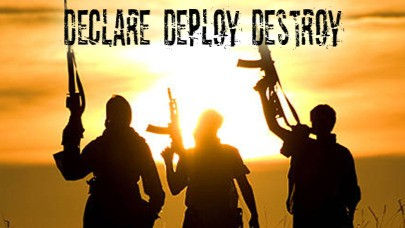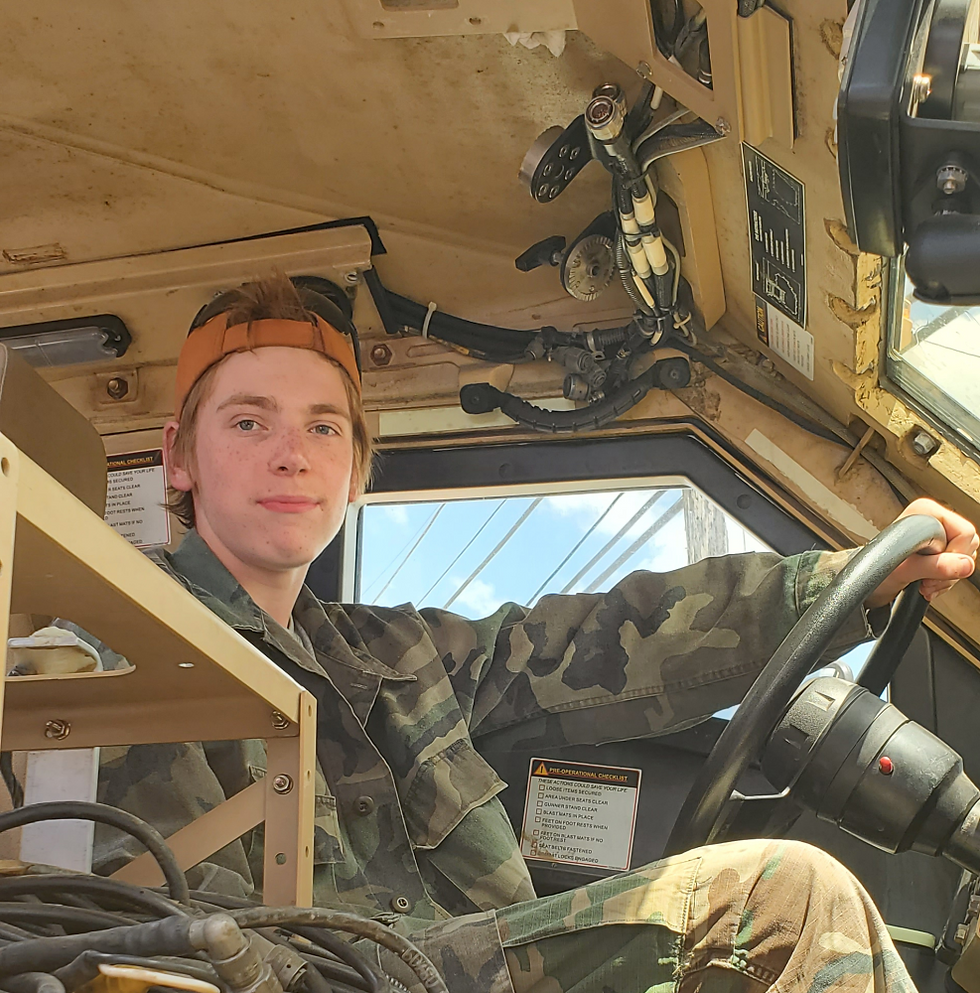Is assassination going to become the new normal?
- EG Weiss

- Aug 9, 2023
- 6 min read

In my new program I have been speaking of Ecuador and the role it is playing almost silently in what we are seeing at our own border and across the United States. With mainstream news more concerned about laptops and bribery, indictments and name-calling, very little coverage is ever given to Ecuador and the current state of war. That is right, I said “war”.
Mexican cartels have long played a violent if not gruesome role in Ecuador's drug trade, but now the cartels are calling all of the shots it would seem. cartel-financed cocaine produced by Columbian guerilla groups slides easily into Ecuador on cartel wings as the cartels then pay Ecuadorian gangs to get the cocaine into ports and eventually boats at sea.
The gangs, now well-financed due to their transportation gains, are empowered and financed which only enhances their growth. The massive gangs now wage a proxy war on behalf of the cartels all while fighting with each other which has turned Ecuador into one of the bloodiest places in the world.
The cartels have become adept at being contractors; hiring “sub-contractors” to do their dirty work and thus eliminating the danger of any repercussions on the cartel itself. The constant fighting between the gangs that are sub-contracting only helps the cartels as each time a battle between gangs is waged, the victor stands taller, richer and more inclined to do the cartel’s bidding. And so the cartels become stronger.

Using this subcontracting model, the Mexicans no longer need extensive criminal infrastructure and grand networks, they just need contacts, perhaps a lesson learned from America’s original New York and Chicago mobsters. This division into decentralized cells and the rotation of personnel allows them to operate below the radar and stay ahead of the authorities.
Approximately three weeks ago, the mayor of Manta was assassinated. A reminder that only 5 months ago the Mayoral candidate for the city of Puerto Lopez, Omar Menendez was murdered.
Manta is one of the Ecuador’s main ports and is located about 248 miles from the capital Quito. Agustín Intriago, 38 years old, was shot while on a tour of sewage works. He was shot six times, mostly in the chest. The attack also left four people injured and one young woman dead — Ariana Chancay, a sportswoman, had approached the mayor to ask for help to buy uniforms for the neighborhood’s women’s soccer team.
Mayor Intriago was an extremely popular figure. This was his second term in office, which he won in the February elections with 61% of the vote. A few hours after the crime, the police had managed to apprehend a person in connection with the mayor’s murder and are continuing their investigation. All this occurred as Ecuador experiences a not-so-normal election cycle which was horribly interrupted again today.

The location where the mayor was killed is no less important. Manta is a city of just over 250,000 inhabitants in the province of Manabí. It is an open port on the deep Pacific Ocean and one of the gateways for drugs transiting from Colombia to other countries.
Manta is known as an important area for the transfer of drugs and so it is no shock that the Mayor was struck down in such a prominent location. Originally the area’s reputation was for smuggling of a different kind. The entire coastline was used in the 1990’s as a place to load boats with immigrants who then hid in engine compartments and false bottoms of boats in order to reach the United States. Once immigrants began to force their way across the United States border on land and by foot as we see today, the Manabi area became the perfect spot to launch smuggled cocaine anywhere the cartels needed or desired to send it.
In 2012, the first evidence of Ecuador’s ties to the Mexican Sinaloa Cartel became known when the former governor of Manabí, Cesar Fernandez, was found with 115 kilos (253 pounds) of cocaine that was to be sent to Mexico for the Sinaloans.
While we saw the face of the Sinaloa Cartel again today, they are not the only major players in Ecuador. There is much evidence of the Jalisco New Generation Cartel in Ecuador as well as rumors of Albanian mob involvements as well.

Since COVID shut the world down for slightly over a year, the overstock of drugs that could not be shipped during the pandemic has led to a turf war between various local criminal gangs that serve as logistical operations for both the Sinaloa Cartel and the Jalisco New Generation Cartel.
The crime against the mayor of Manta occurred in a particularly violent weekend in Ecuador. A few hours before Intriago’s murder, the government had raised an alert in all the country’s prisons for possible riots. It all started on Saturday afternoon, when bomb detonations and bullets being fired were heard at the Penitenciaría del Litoral prison in Guayaquil.
The information issued by the Service for the Attention of Persons Deprived of Liberty (SNAI) prison service was scarce, and they limited themselves to reporting that they still “maintained control of the penitentiary,” but the almost 24 hours of shootings, the column of smoke coming out of the prison, and the videos of headless and incinerated bodies told a different story. After numerous requests for information, the SNAI reported in a document on Sunday afternoon that six prisoners had died and 11 were wounded. It also stated that SNAI prison security agents were being held by criminal groups in four different prisons. It does not take a lot of investigating to notice the perfect timing and organization of such events.

All of this should be setting off a lot more alarm bells than are ringing back here in the States. The cartels have obviously found a way to move much of their activity, power and influence further south in order to gain more strength and influence far from U.S. borders. As the Sinaloa Cartel and the Jalisco New Generation Cartel are battling for dominance over the transport of cocaine from Columbia, it is not just the violence that we should be concerned about but the increase in production and transport by these two groups. As each attempt to destroy each other they also strive to out-perform each other and the results of that effort are being seen at our border.
Ecuador was long known as one of the most peaceful countries in Latin America, but its soaring murder rate is now comparable to Medellin, Colombia during the reign of Pablo Escobar. Ecuador’s homicide rate jumped 245 percent between 2020 and 2022. putting it right behind troubled Honduras and Venezuela.
With the Ecuadorean gangs on the payroll, the cartels are now financing training camps to formally train the gang members how to become killers; a page from the ISIS playbook? It would seem to be true as we have intelligence that says children are being recruited as assassins because under Ecuador’s legal system they face relatively little prison time if they are caught.

This month, Ecuador’s President Guillermo Lasso issued a decree ending a 12-year-old ban on civilians owning firearms, which he said would further the goal of defeating “delinquency, drug trafficking and organized crime.” The message? With police and the military unable to protect citizens from gang violence, access to weapons might give citizens a fighting chance in a country where 45 percent of Columbia’s cocaine is gathered and then distributed.
This brings us to the news of today.
Fernando Villavicencio, a member of the country's national assembly, was attacked as he left an election event in the northern city of Quito on Wednesday. From the videos I have seen and the reports I have read, Mr. Villavicencio was just about to get into his car when the shooting occurred. Villavicencio was 59 years old. He was shot three times in the head in professional “hitman style” by two gunmen. Nine others were injured including two police officers but from the videos I have seen, these injuries were probably not all gunshot related (although there was over 40 shots fired) but from the chaos that ensued as the shooting happened.
According to Patricio Zuquilanda, Villavicencio’s campaign adviser, Villavicencio had been receiving many death threats over the last few weeks and I was able to find footage from two weeks ago where he told the public about these threats and reminded his followers that he was the anti-corruption candidate.

Last week Villavicencio, who was a former journalist known for tackling corruption, said he and his team had been threatened by the leader of a gang linked to drug trafficking but did not mention which gang or what cartel was related to the threats. In May, when announcing his candidacy, Villavicencio declared that he intended to “take on and defeat the mafias which have corrupted the state and have society on its knees”.
Villavicencio will now never have that opportunity as he has now been cut down just as his campaign was gaining strength. His death, while shocking and personal to Ecuadoreans who saw hope in someone with the guts to play hardball with the cartels, seems to be just a blip on our U.S. news channels. Perhaps it is because of what seems to be the World War III of agendas being fought on our soil at this moment and perhaps it is because nobody has really given any thought yet to what it means when the cartels have begun what looks like an impressive move to not only control governments but the elections held by those governments.



Comments